Getting on the Map: Prospering as a DMO
It’s an exciting prospect—the travel and tourism industry and policy makers come together to increase funding for the marketing of a destination. The hopes and dreams of the tourism community for more visitors, more jobs, and a stronger economy can finally become reality. But now what? What happens next, and how do you prepare all participants for the fundamental changes that must take place to ensure that those dreams become reality?
Based on our experience with dozens of Destination Marketing Organizations (DMOs), we’ve compiled our observations into five transformational changes that take place in DMOs who have experienced the success of new funding.
Who’s in charge here?
One challenge that frequently accompanies additional funding is a shift in the dynamics between the CEO and the Board. New funding comes from a set of industry stakeholders, often the hotel and lodging community, and the Board members from this community will feel more engaged and have high expectations. Those Board members might even be feeling pressure from their industry partners, and certainly have a sense of responsibility that the additional funding show strong returns. These dynamics can lead to intense pressure on the CEO, as the Board shows increased interest in being involved in decisions at a more operational level than ever before.
Given these pressures on the CEO, one of our frequent recommendations is to immediately begin the process of developing a strategic plan once the funding is in place. The strategic planning process can serve as a conduit to incorporate industry and Board member expectations, wishes, and hopes in a way that acknowledges them but sets reasonable expectations for what can be accomplished. It also becomes a tool for the CEO to show where he or she is focusing their efforts, and what the impact will be.
Focus on ROI
As soon as the funding starts to flow, so too comes the question, “What are we getting in return?” Funders, whether from the hotel and lodging community, or from the public sector, will want to understand what results the increased funding will create. The optics of how money is spent, and where it is spent, become increasingly important. DMO leaders need to have a laser-focus on the return on investment (ROI) of their programs, and be able to tell the story effectively.
In today’s DMO, a focus on ROI often leads to an increase in social media support. DMOs need to focus on strengthening this channel as a way to reach new visitors, bring them to the destination, and guide them in their experience of the destination. Investing more in social media often means getting more bang for the buck.
Leading the way
With increased money comes increased responsibility. After a funding boost, DMOs are invited to have a seat at the table for a host of important discussions, which can include anything from policy decisions to new development of the destination. How these opportunities are leveraged is critical and can transform the future of the destination.
Taking a leadership role in the development of the destination is a key opportunity that is often overlooked by DMO leaders. Instead of waiting for that new arena to be built or the light rail connection to the airport to be completed, DMOs can lead that discussion in a way that has credibility and links to the economic impact for which DMOs exist. When done well, it can also bring attention to the economic impact of tourism on a region, and the benefits of destination marketing in general.
At the same time, DMOs with increased funding experience a rush of requests to fund new initiatives, many of which may be outside their wheelhouse. New venues, events, and opportunities abound, and it’s hard to say no to any of them. Having a set of criteria to evaluate whether to get involved, or not, is a critical tool for DMO leaders.
Working smarter
Through our work with DMOs, we’ve also observed a change in the way that DMOs operate when they receive additional funding. Often, instead of adding significant numbers of new staff, DMOs will create and leverage a team of partner agencies – creative, sales, event planning contractors who become the “arms and legs” of the destination marketing programs.
This reliance on outside support leads to a more subtle shift in the role of DMO team members. Instead of driving programs themselves, they now become the leaders and directors of programs. It is as if, overnight, the expectations for each role in the organization were moved up a level. This shift can be challenging for individual contributors who have been accustomed to doing everything “hands on” throughout their entire career. Developing a leadership culture and leadership expectations can be critical to support this transition.
Tell the story
he combined pressure of increased funding and a focus on ROI leads to our final transformation in DMOs with increased funding.: telling the story of what the DMO is focused on, what they are doing, and why it’s important becomes critical. Both the CEO and senior leaders need to become even more active promoters to a wider range of people and organizations.
In addition, it’s important for the CEO to identify big early wins to talk about.
Funders, Board members, industry supporters and detractors will need assurance that good things will come of the increased investment in marketing the destination. It also helps that they’ll be more likely to be supportive of the DMO leadership when they know things are on the right track.

